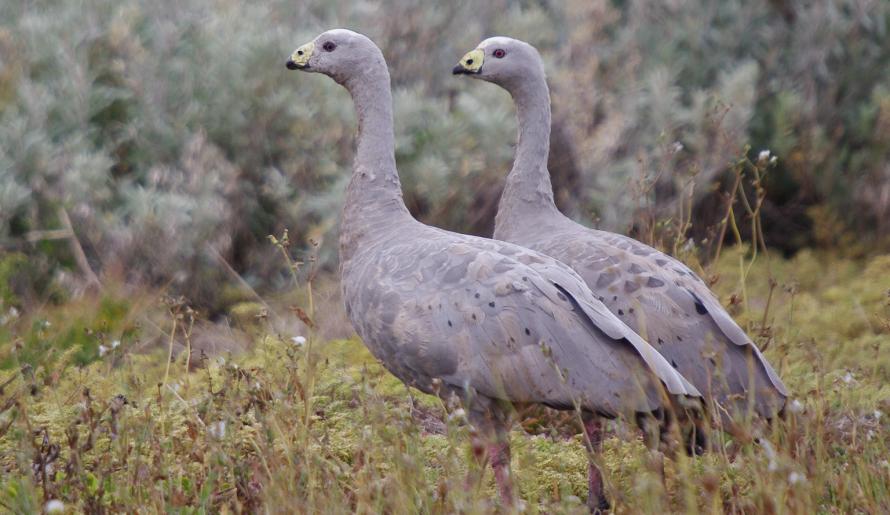


Cape Barren Goose
Cereopsis novaehollandiae
| Details | |
|---|---|
| Type | Bird |
| Group | |
| Biology | Breeding season: July to September. Clutch size is four to seven eggs. During the summer, the non-breeding geese generally leave the islands for the mainland where they feed on improved pasture. |
| Distinctive Markings | Stubby triangular bill. |
| Taxonomy | |
|---|---|
| Phylum | Chordata |
| Class | Aves |
| Order | Anseriformes |
| Family | Anatidae |
| Genus | Cereopsis |
| Species | novaehollandiae |
The Cape Barren Goose is able to drink salty or brackish water, allowing many of them to remain on offshore islands all year round.
| Interesting Facts | |
|---|---|
| Diet | Herbivore. Feeds on common island tussock grass, Poa poiformis, as well as spear grass and various herbs and succulents. They also eat pasture grasses, including barley and clover, and legumes. |
| Habitat | Found on offshore islands, in areas of pasture, tussock grass or low healthy scrub. |
| Native Status | Native to Australia |